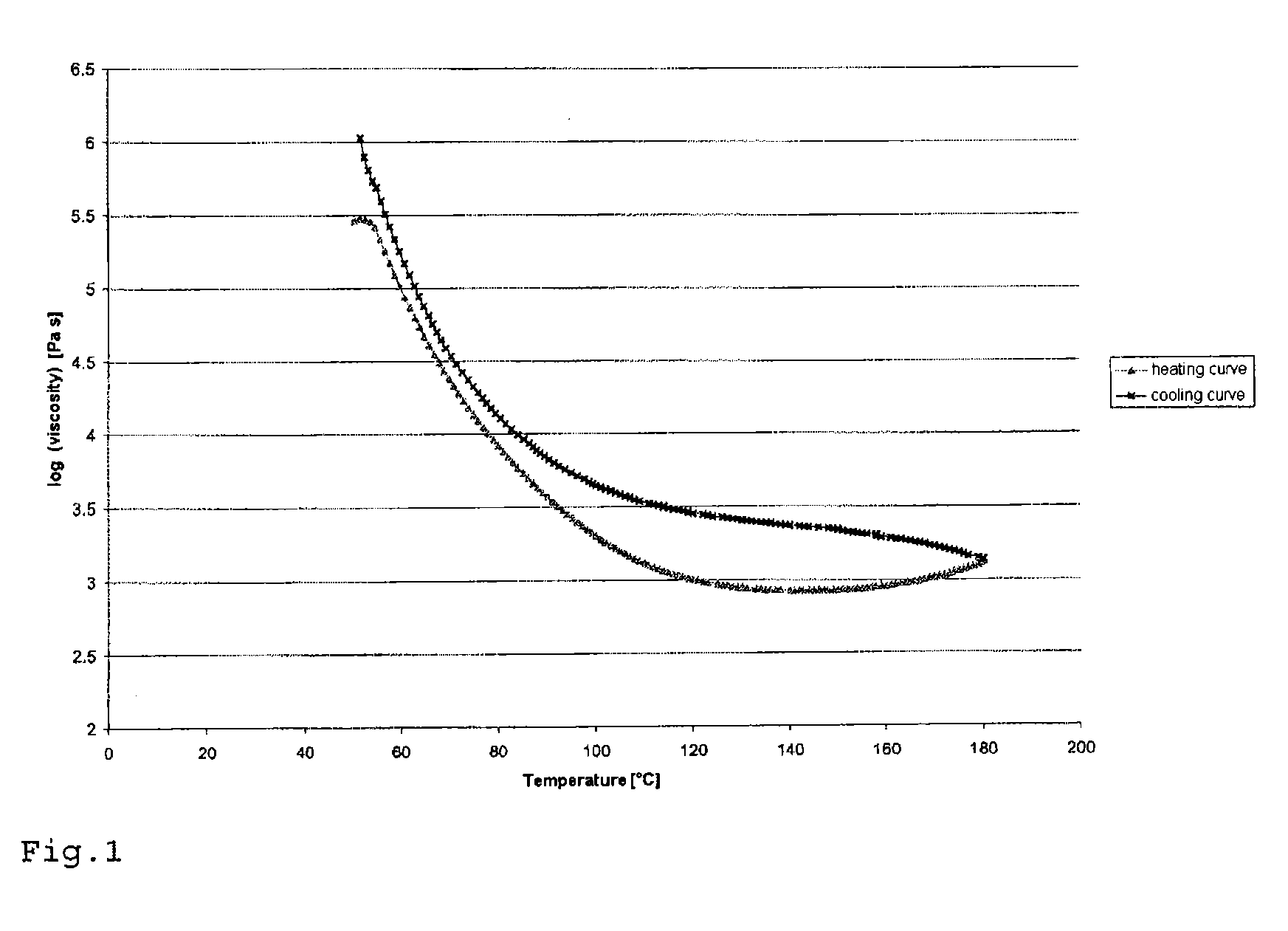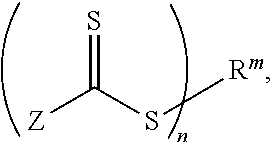Materials having a controllable degree of crosslinking
- Summary
- Abstract
- Description
- Claims
- Application Information
AI Technical Summary
Benefits of technology
Problems solved by technology
Method used
Image
Examples
example 1
[0070]20 parts by weight of precursor 2 are admixed with 15 parts by weight of precursor 3 (0.75 equivalent with respect to Cp groups), 50 parts by weight of acetone and one part by weight of ZnCl2, and the mixture is stirred at room temperature for 2 hours. The sample is thereafter poured into an aluminium tray and dried (overnight) in a vacuum oven at 50° C. The tough and elastic mass was subjected to dynamic mechanical analysis and characterized over a temperature range between 50 and 180° C. by means of plate / plate viscosity (see FIG. 1). DSC indicated a glass transition temperature for the mass of −6° C.
[0071]It is evident that the material has a softening point at around 55° C., at which some of the Diels-Alder bridges formed between Cp groups and maleic ester are broken. The Cp-Cp compounds which originate from the excess of the Cp groups and which are not reversible under the measurement conditions are retained as crosslinkers. This non-reversible crosslinking is therefore a...
PUM
| Property | Measurement | Unit |
|---|---|---|
| Temperature | aaaaa | aaaaa |
| Temperature | aaaaa | aaaaa |
| Fraction | aaaaa | aaaaa |
Abstract
Description
Claims
Application Information
 Login to View More
Login to View More - R&D
- Intellectual Property
- Life Sciences
- Materials
- Tech Scout
- Unparalleled Data Quality
- Higher Quality Content
- 60% Fewer Hallucinations
Browse by: Latest US Patents, China's latest patents, Technical Efficacy Thesaurus, Application Domain, Technology Topic, Popular Technical Reports.
© 2025 PatSnap. All rights reserved.Legal|Privacy policy|Modern Slavery Act Transparency Statement|Sitemap|About US| Contact US: help@patsnap.com


